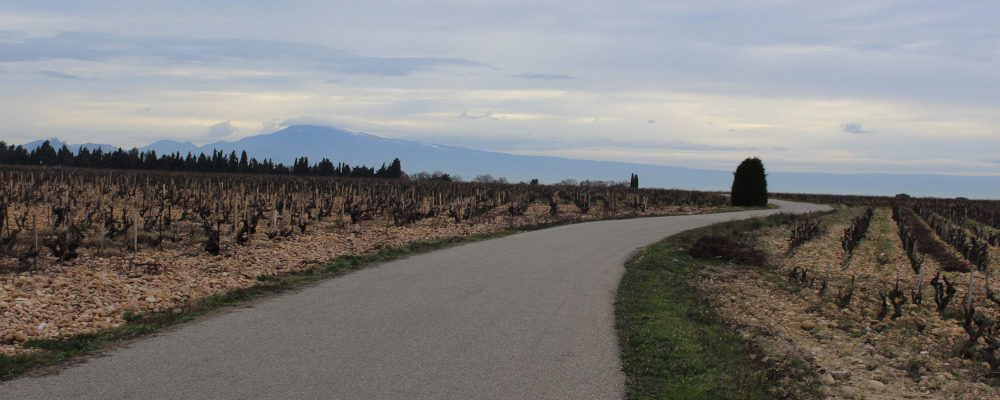This coming Friday, like every third Friday in September since 2010, is International Grenache Day.
There is probably a promotional day for every product sold and Grenache Day sounds like a fake holiday dreamed up by a public relations firm eager for an excuse to peddle a client’s wares. But it’s not really, and it was conceived by a group of respected French producers and the late, and very well respected, wine writer and merchant Steven Spurrier.
They decided to celebrate the day after holding their first ever symposium on the grape in the South of France that year. Their aim was less about creating a marketing gimmick and more about reminding wine enthusiasts about a grape that often doesn’t get the attention and respect Grenachistas (like me) think it deserves. I don’t need a special day to drink Grenache or Grenache-based wines, but it’s a good excuse to recall why some of the best value reds on the shelf feature the grape, and that requires a little wine history.
MORE SIGNAL. LESS NOISE. THE HUB NEWSLETTER.
Grenache is commonly the used as the short form for “Grenache Noir,” the red version of the grape that also come in Grenache Blanc and Grenache Gris versions. (Like there is Pinot Noir, Pinot Blanc and Pinot Gris (Grigio)). Grenache is also called different things in different places. Its origin is in Northern Spain, where it is known as Garnacha. The Spanish spread it around through the Middle Ages and Early Modern Era, when their royal houses controlled large areas of what is now Mediterranean France and much of Italy. One of those places their Garnacha was spread and took hold was Sardinia, where it is known as Cannonau, and serves as principal red grape on the island.
Grenache continued its spread around the Western Mediterranean with the colonization by the French and Spanish of North Africa in the 19th Century. And finally as far as the Western Cape of South Africa and South Australia. Colonists and settlers found Grenache vines perfect for warm, dry climates and favoured them for their rigour and high yields. In Southern Europe, after the blight of phylloxera decimated its vineyards at the turn of the last century, Grenache was a popular grape to replant with vignerons eager to make-up for years of lost production.
Unfortunately for Grenache, the characteristics that made it the darling of viticulturists for most of its history had, by the late 20th century, turned it into a bête noire among critics and consumers. Grenache became known as a grape that made cheap wine, when it wasn’t leading part of the great “wine lake” of over production in the European Union. By the 1990s even Grenache’s most famous and prestigious site of production, Châteauneuf-du-Pape in the Southern Rhône Valley, was engaged in an exercise of modernization and re-branding. Grenache had lost its lustre.
Outside of Europe, in South Africa, but especially in Australia, Grenache was ignored in favour of, or replanted with, another wine grape widely grown in the Rhône Valley: Syrah or, as they called it, Shiraz. Producers in the Barossa Valley who began experimenting with Rhône blends called them ‘GSM’, rather than Grenache Syrah Mourvèrdre. To be fair, GSM was likely more about clever marketing and giving consumers an easy to remember category of red wine than anything against Grenache, but the net effect did no great favours to the reputation of the grape.
And then, around the time of the first Grenache Day in 2010, things began to turn around, due in no small part to changes brought on in the 1990s. It wasn’t just Châteauneuf-du-Pape producers who were re-examining the quality of their wines, producers across the South of France, Northern Spain and Sardinia were also reconsidering their business models 30 years ago. These new ways of doing things included a shift from quantity to quality and selling wines made on the estate rather than grapes to a co-operative or large winemaker. They also included a switch from “international grapes” like Cabernet Sauvignon or Merlot to ones traditional to Southwestern Europe, like Grenache.
It turns out that when Grenache is farmed for low yields, mostly by aggressive pruning, the quality of the wines it makes is an altogether different and better thing. It takes a while to make changes in the wine world, where time is measured in vintages. But by the second decade of the 21st century, savvy consumers, critics and sommeliers were rediscovering Grenache-based wines. The reputation of wines from the Rhône were climbing, especially among the regions around Châteauneuf, like Gigondas and Vacqueras. To the west, so too were Languedoc and Roussillon beginning to be taken seriously as fine wine producers. While wine enthusiasts looking for something different were exploring Northern Spanish wines beyond Tempranillo-based Rioja, and looking into previously overlooked centres of production like Sardinia.
Changes were also bearing fruit in the New World. The other way to lower yields is to make wine from very old vines, and after years of neglect Australian producers were discovering some very old Grenache vines, that had been planted sometimes more than a hundred years ago to make a version of fortified red wine. In South Africa, producers in up and coming regions like Swartland worked with Grenache as it suited their dry farming (no irrigation) and low intervention ethos. Grenache was coming back.
Grenache is still coming back in the sense that there are still great deals on $20 and under Grenache-based wines, and very good ones at under $30 in 2021. Look for wines from up and coming Côtes-du-Rhône “villages” like Cairanne or Ventoux, which will almost always be Grenache dominant. Poke around the Spanish shelves for a Garnacha, which is now printed on labels as a show of pride. Australian Grenache can be a little harder to find, but look out for Yalumba’s Old Vines Grenache when and if it comes through. Grenache is too difficult to grow commercially in Niagara, but it will in Okanagan and there are a few producers there making a small amount. In any event, have a happy Grenache Day with whatever is in your glass.




